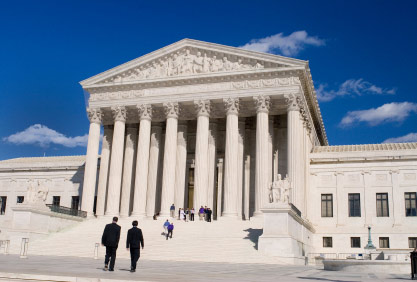Blog

Herbert v. American Biltrite: Pennsylvania’s Superior Court Holds That Virginia’s Statute of Limitations Bars Asbestos-Personal-Injury Claim
/ 15.Jan, 2016
In a non-precedential opinion filed on January 12, 2016, Pennsylvania’s Superior Court affirmed the Allegheny County Court of Common Pleas’ Order granting Defendants summary judgment and dismissing Plaintiff’s complaint as time-barred. In reaching its conclusion, the Superior Court held that, under Virginia’s statute of limitations, Plaintiff was required to bring its claim within two years of the decedent receiving a diagnosis of asbestosis. 1 The Superior Court also rejected Plaintiff’s argument that the decedent’s mesothelioma—diagnosed approximately seven years after the decedent was diagnosed with asbestosis—gave rise to a distinct claim with a distinct limitations period.
Swartz Campbell’s attorneys have experience counseling and defending material suppliers, product manufacturers, distributors, premises owners, and employers in cases involving asbestos and asbestos exposure. If you have any questions or would like to discuss this article further, feel free to contact the author or any of the attorneys in Swartz Campbell’s Environmental & Toxic Torts Department.
Facts
The decedent in Herbert v. American Biltrite was diagnosed with asbestosis in June 2003. Additional tests performed in November 2005 were consistent with the 2003 diagnosis. In February 2010, the decedent underwent a thoracoscopy and biopsy and was diagnosed with mesothelioma. He died a few weeks later. Plaintiff, the administrator of the decedent’s estate, filed an asbestos-personal-injury lawsuit in September 2011, alleging that the decedent’s death was caused by his exposure to Defendants’ asbestos-containing products. Following the close of discovery, Defendants moved for summary judgment, arguing that Plaintiff’s claim was time-barred by Virginia’s statute of limitations. According to Defendants, Virginia’s statute of limitations required that Plaintiff file its lawsuit within two years of the moment its claim arose. Defendants contended Plaintiff’s claim arose when the decedent was diagnosed with asbestosis in 2003, so the period within which Plaintiff could bring its claim expired in 2005. Plaintiff replied that the limitations period began when the decedent was diagnosed with mesothelioma in 2010. According to Plaintiff, the 2003 diagnosis was a mistake—the decedent never had asbestosis. To support its claim, Plaintiff provided expert testimony disputing the 2003 diagnosis and opining that the decedent’s asbestos exposure first caused a “disabling asbestos-related injury” when he was diagnosed with mesothelioma in 2010. Because the 2003 diagnosis was a mistake, Plaintiff argued, its claim first accrued in 2010. Agreeing that Virginia law governed and Plaintiff’s claim first accrued in 2003, the Allegheny County Court of Common Pleas granted Defendants’ motion for summary judgment. Plaintiff appealed.The Superior Court Affirms the Trial Court’s Ruling
On appeal, the Superior Court held that whether the 2003 asbestosis diagnosis was accurate is irrelevant to determining when the limitations period began. Virginia’s statute of limitations governed, and under Virginia law, the limitations period began as soon as “a diagnosis of asbestosis, interstitial fibrosis, mesothelioma, or other disabling asbestos-related injury or disease is first communicated to the person or his agent by a physician.” 2 Plaintiff conceded that his physician advised him in 2003 that he had asbestosis, so the limitations period began in 2003. The Superior Court also rejected Plaintiff’s argument that the mesothelioma diagnosis gave rise to a claim distinct from the claim generated by the 2003 asbestosis diagnosis. Virginia employs an “indivisible cause of action” rule. Thus, under Virginia law, regardless of what damages may develop, there is but one actionable wrong that may serve as the basis for recovery. Here, therefore, even if the decedent had suffered separate injuries (asbestosis and mesothelioma), those injuries were indivisible for the purpose of determining when a cause of action accrued. They arose from the same wrong—the decedent’s exposure to asbestos. Accordingly, the Superior court affirmed the order granting Defendants’ summary judgment.Conclusion
Had Plaintiff’s claim been governed by Pennsylvania’s statute of limitations, the result likely would have been different. Unlike Virginia, Pennsylvania has adopted the “two disease rule,” under which a non-malignant asbestos-related disease (e.g., asbestosis) and a malignant asbestos-related disease (e.g., mesothelioma) give rise to distinct causes of action. 3 Because, under Pennsylvania law, a mesothelioma diagnosis gives rise to a separate cause of action, and because Plaintiff brought its claim within two years of the decedent’s mesothelioma diagnosis, Plaintiff’s claim likely would have been found procedurally proper if Pennsylvania law applied. This decision reinforces the importance of scrutinizing the facts of each case to determine whether another forum’s more favorable laws can be applied.1 Virginia’s statute of limitations was applied pursuant to Pennsylvania’s Uniform Statute of Limitations on Foreign Claims Act. Under the Act, claims that accrue outside of Pennsylvania are governed by either Pennsylvania’s statute-of-limitations scheme or the statute-of-limitations scheme of the forum in which the claim accrued, whichever is shorter. 42 Pa. Cons. Stat. § 5521(b).
2 Va. Code Ann. § 8.01-249(4).
3 See, e.g., Abrams v. Pneumo Abex Corp., 981 A.2d 198, 208 (Pa. 2009).
Swartz Campbell’s attorneys have experience counseling and defending material suppliers, product manufacturers, distributors, premises owners, and employers in cases involving asbestos and asbestos exposure. If you have any questions or would like to discuss this article further, feel free to contact the author or any of the attorneys in Swartz Campbell’s Environmental & Toxic Torts Department.


Comments